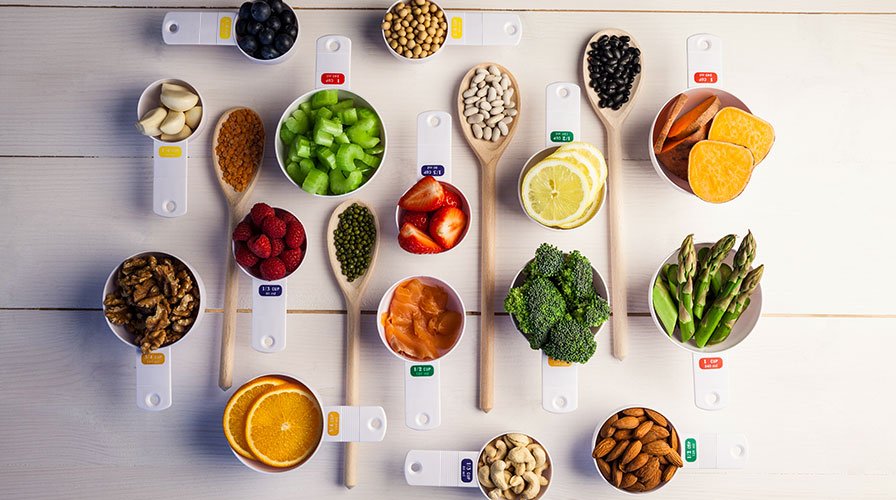How to Read Nutrition Labels Like a Pro
🥫 How to Read Nutrition Labels Like a Pro
A simple step-by-step guide to decoding your food and making healthier choices.
Understanding nutrition labels doesn’t have to feel like reading a foreign language. With just a few key steps, you can quickly spot what’s helpful, what’s harmful, and what works best for your health goals.
Here’s how to read a nutrition label—step by step.
Step 1: Start with the Serving Size
At the top of the label, you’ll see the serving size and the number of servings per container. This is your reference point. All the nutritional values listed on the label are based on one serving, not the entire package. If you eat more than one serving, you’ll need to multiply the calories and nutrients accordingly.
📝 Pro tip: Compare serving size to what you actually eat. A “half cup” serving might be much smaller than your typical portion.
Step 2: Look at the Calories
Right below the serving size, you’ll find the calories per serving. This tells you how much energy the food provides. While calorie needs vary by person, this number is useful for overall energy awareness.
📝 Pro tip: If you’re managing weight or energy levels, pay attention to this number—but don’t obsess over it. Focus more on quality than quantity.
Step 3: Check the Fat Content
Under calories, you’ll see total fat, saturated fat, and sometimes trans fat.
- Total fat includes all types of fat.
- Saturated fat should be limited—ideally less than 10% of your daily calories.
- Trans fat should be avoided completely, as it raises bad cholesterol (LDL) and lowers good cholesterol (HDL).
📝 Pro tip: Look for foods with healthy fats (like nuts or avocado) and minimal saturated or trans fats.
Step 4: Read the Carbohydrates Section
Carbs are broken down into total carbohydrates, dietary fiber, and total sugars (which includes added sugars).
- Fiber is great for digestion, satiety, and blood sugar control—look for foods with at least 3–5 grams of fiber per serving.
- Added sugars are where most of the hidden sugar in processed food lives. Limit added sugars to less than 10% of daily calories.
📝 Pro tip: If a product is high in sugar but low in fiber, it’s probably not your healthiest option.
Step 5: Spot the Protein
Protein helps keep you full, supports muscle repair, and maintains blood sugar stability. A good rule of thumb is to aim for 10–20 grams of protein per meal, depending on your needs.
📝 Pro tip: Look for protein in snacks and breakfast items to help keep energy steady throughout the day.
Step 6: Understand the % Daily Value (%DV)
These percentages on the right side of the label help you quickly evaluate whether a food is high or low in certain nutrients.
- 5% or less = low
- 20% or more = high
Focus on high %DVs for fiber, vitamins, calcium, iron, and other essential nutrients. Watch for high %DVs of saturated fat, sodium, and added sugars—these are best kept in check.
📝 Pro tip: Use %DV to compare products quickly when choosing between two options.
Step 7: Check the Sodium
Sodium is one of the easiest nutrients to overdo, especially with processed or packaged foods. Try to keep daily sodium intake under 2,300mg, and aim for foods with less than 140mg per serving if you're watching your intake.
📝 Pro tip: Even "healthy-looking" foods like soups, sauces, and frozen meals can have high sodium—always check the label.
Step 8: Scan the Ingredient List
Ingredients are listed in order of quantity, from highest to lowest. Look for:
- Short, recognizable ingredients (things you’d find in your own kitchen)
- Whole foods near the top (like oats, brown rice, almonds)
- Minimal artificial additives, preservatives, and sweeteners
Be cautious of hidden sugars (like high fructose corn syrup or “evaporated cane juice”) and hydrogenated oils (a red flag for trans fats).
📝 Pro tip: The fewer ingredients—and the more real, whole ones—the better.
Step 9: Ignore the Front of the Package
Marketing claims like “low fat,” “natural,” or “gluten-free” can be misleading. They don’t necessarily mean the food is healthy.
📝 Pro tip: Flip the package over and go straight to the nutrition label and ingredient list. That’s where the truth is.
Final Thought: Read It. Understand It. Own It.
Reading nutrition labels gives you the power to make informed decisions—whether you're shopping for meals, managing dietary needs, or just aiming to feel your best. The more familiar you get with labels, the quicker and easier it becomes to spot quality food that fits your goals.
📲 Want a printable Nutrition Label Cheat Sheet for your fridge or wallet? Let us know—we’ll send one your way.
💬 Have questions or tips for label-reading? Share them with us @DailyBlogDispatch and join the healthy eating conversation.

